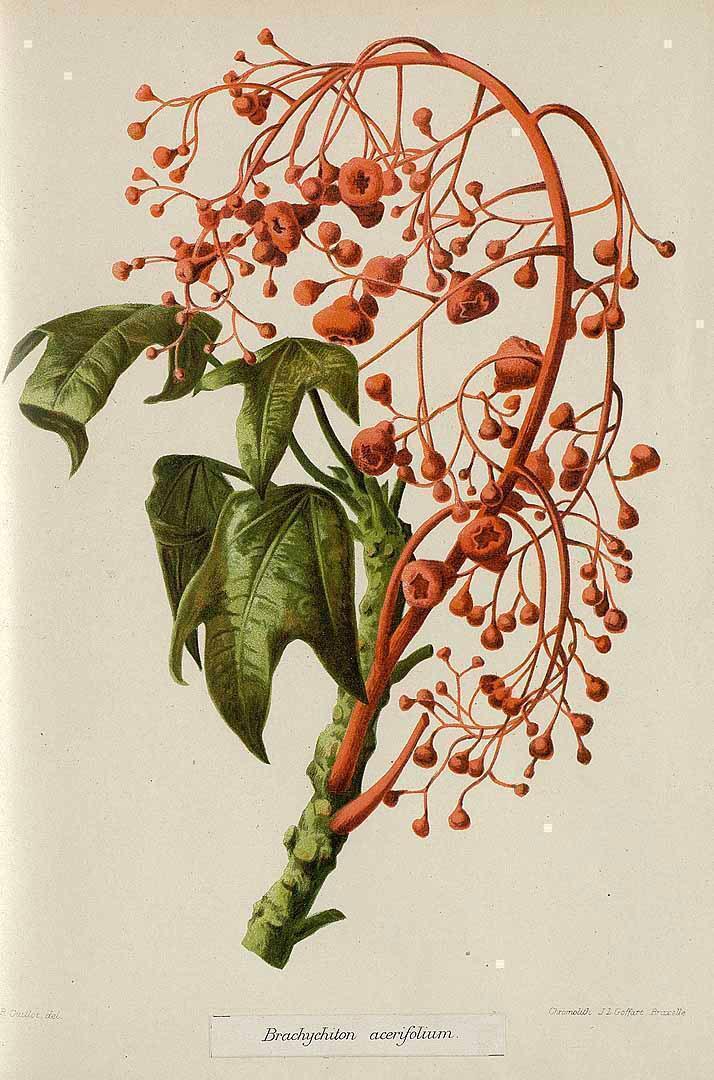Brachychiton acerifolius (A.Cunn.ex G.Don) F.Muell
MalvaceaeComo otros árboles del género, es una especie australiana, concretamente de la costa Este de Australia desde Nueva Gales del Sur hasta Cabo York (Queensland). Brachychiton deriva del griego brachys, 'corto' y chiton, 'cubierta', aludiendo al recubrimiento de sus semillas. El epíteto específico acerifolius alude a sus hojas, similares a las del Acer saccharum, un arce, aunque en realidad tiene una gran variabilidad en la forma de sus hojas, que pueden ser desde enteras (especialmente en ejemplares adultos) a lobadas con entre 3 y 7 lóbulos.
Una de sus características más apreciadas en jardinería es que, siendo semicaducifolio (pierde gran parte de las hojas, pero no todas), su floración se produce a finales de primavera antes de que broten las nuevas hojas. Las flores son unas pequeñas campanillas de color rojo escarlata, que cubren su copa de un rojo brillante, aunque la profusión de flores depende mucho de la meteorología y no siempre tiene la misma intensidad.
Es además un árbol de crecimiento rápido y longevo, fácilmente adaptable aunque requiere bastante agua en verano pese a resistir bien la sequedad. Por contra, no florece hasta la madurez, lo que sucede normalmente a los 8 años. Los aborígenes australianos comen sus semillas de color amarillo una vez tostadas.
Procedencia
OceaníaCalendario
Hábitat
Morfología
 Árbol
Árbol
 Cónica
Cónica
 Simple
Simple
 Ovada
Ovada
 Elíptica
Elíptica
 Lanceolada
Lanceolada
 Lobado
Lobado
 Entero
Entero
 Truncada
Truncada
 Obtuso
Obtuso
 Caduco
Caduco

 Powered by
Powered by